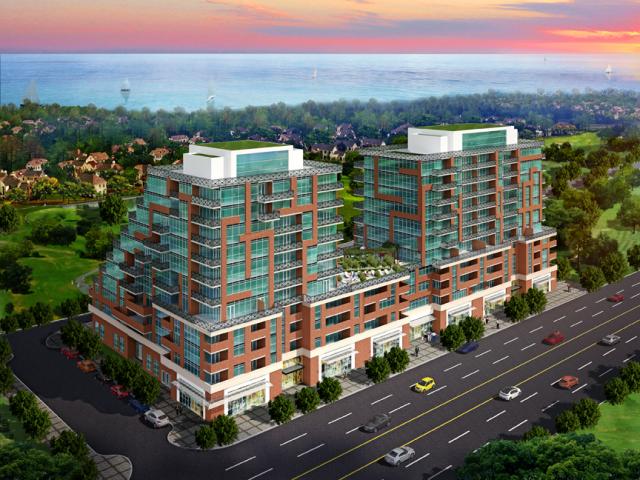I've been thinking about this again. I still think Toronto is going to have to prepare for a lot more growth. Looking at condo/appt projects and their locations, it seems many growth centres in the suburbs aren't seeing as much activity as they should be, while Downtown Toronto, Midtown, NYCC and Humber Bay Shores continue to boom.
Despite the fact that Mississauga has basically run out of land now with the development of Meadowvale Village and Churchill Meadows wrapping up, there doesn't seem to have been much of an increase in condo development, keeping in mind that in 2006-2011 there were already a lot of developments in Mississauga Centre, as well as others in smaller nodes, but these areas still grew by only around 17,000, with about 28,000 in population growth happening in greenfields in East Credit, Churchill Meadows and Meadowvale Village. It seems like population growth will be slowing down, unless you see a change in the trend in household sizes.
Pretty much only Mississauga, Vaughan, Markham and Richmond Hill are seeing significant infill right now. The other 905 municipalities are seeing a few projects here and there, but it's basically a drop in the bucket. Durham and Halton saw essentially no net population increase in their established areas. Brampton has about 1% of the condo activity that Downtown Toronto has, despite the fact that it's sprawling like there's no tomorrow and added 200,000 people from 2001-2011. At this rate, Brampton will probably run out of land in 10-20 years and have no idea how to intensify. Not to mention limitted areas suited for intensifcation.
Even York Region intensification, while significant compared to the rest of the 905 is not that much in the grand scheme of things. As I said last year, about 10-20% of the growth in these 3 municipalities is debatably infill/intensification, which has increased to maybe around 25% now (keeping in mind that condos have smaller households than houses). However, greenfield growth in Richmond Hill and Stouffville will pretty much be shut off, it seems like there was still a lot in 2006-2011, but going forward, I don't think they can have any. These areas have grown by about 53,000 in the last decade (2001-2011) which is about equal to the total amount of intensification happening in York Region. There was already intensification before the greenbelt though, so growth in York Region will either have to slow down, or intensification will have to increase further, or the other municipalities will have to use up their greenfields sooner.
Soon (within a decade or less), Ajax, Newmarket and Burlington will join Mississauga, Richmond Hill and Stouffville as built out suburbs. The next decade will see Brampton's sprawl machine slow down significantly, as well as Vaughan and Markham. All this growth can't just be transferred to Milton, which is basically already growing as fast as it can and will hit 243,000 people in 2041 if it continues to add 53,000 per decade like it did from 2001 to 2011.
It seems like the Growth Plan seems to be expected all this growth to be transfered from the greenfields of the traditional sprawlburbs to currently slower growing suburbs and 905 intensification. These slower growing suburbs would be places like East Gwilimbury, Georgetown/Halton Hills, Caledon and Pickering (Seaton)... which is not very desirable and will probably be met with resistance. Not to mention it will be difficult to support much of this growth without new highways which seems unlikely.
Since much of the 905 doesn't seem to be infilling as fast as the targets require, and Toronto is exceeding them, I feel like we'll have to prepare for even more growth to be transfered from the 905 than today. So Toronto was supposed to be growing by about 200,000 per decade, now it's more like 300-350k and in the not so distant future, it might be close to 500k per decade. This will mean mass rezoning will likely be required, especially since the areas where most of the growth seems to want to go right now (Downtown, Midtown, NYCC and Humber Bay Shores) are filling up pretty fast within the areas that are zoned high density.
It also means that certain transit projects will really have to be fast tracked. If Toronto is going to add 500,000 people in the next 15 years, and there's only room for about 1/3 of that in the parts of downtown that are already well served by transit and have very high rates of biking/walking, many projects will have to start very soon. The Waterfront/Port Lands streetcars for instance. But also the DRL, considering how long we seem to take to plan and build subways... I mean imagine what the King streetcar and subway will be like with just 150,000 of that growth which would happen in about 5 years at this rate. LRT to Etobicoke will also be needed quite soon, as well as LRT/subways in North York and Scarborough.
On the plus side, if we there is more growth in Toronto proper, that means fewer far flung transit lines will have to be built into the 905. Overall, we could probably served the same amount of people with a less expansive rapid transit system.
By the way, it's possible that what's holding back intensification in some of the 905 is lack of transit, but first of all, that will continue to be a problem in many areas for 1-2 decades, and even when the transit does arrive, I'm not sure how much intensification will happen. The areas served by rapid transit in Scarborough and Etobicoke for instance aren't exactly booming. They're seeing steady growth, yes, but we're talking maybe a few thousand people per decade? There would have to be a lot more intensification then that. In Etobicoke, it seems like about 90% of the condo projects are not near the subway but in Humber Bay Shores, Mimico, Long Branch, Sherway, 427, Queensway and a few elsewhere. Scarborough is similar with a lot of projects around Sheppard East and Kingston Road as opposed to the Scarborough RT/Subway.






